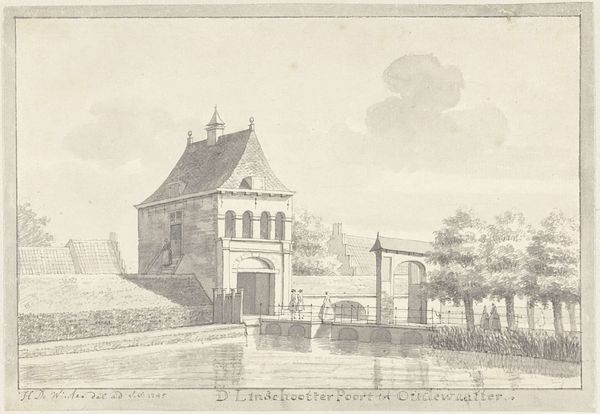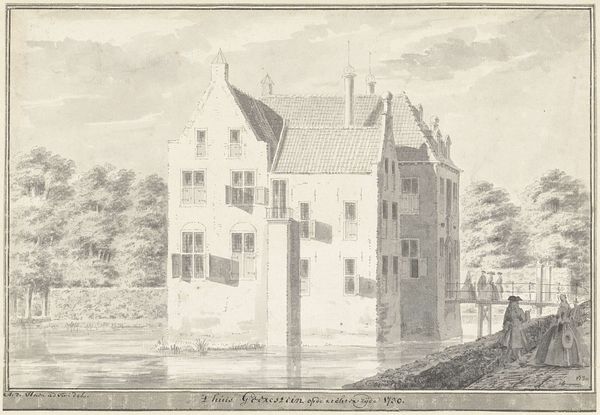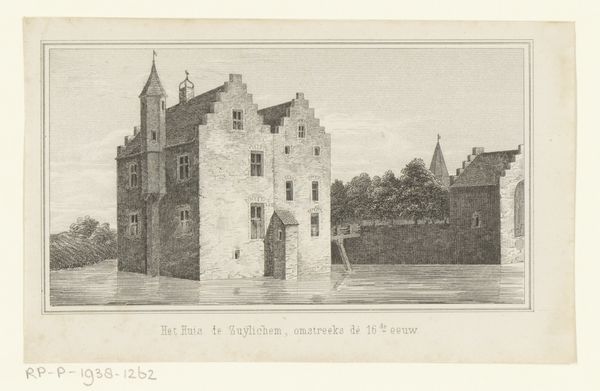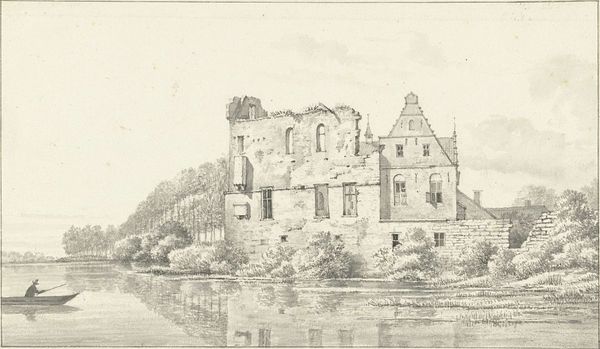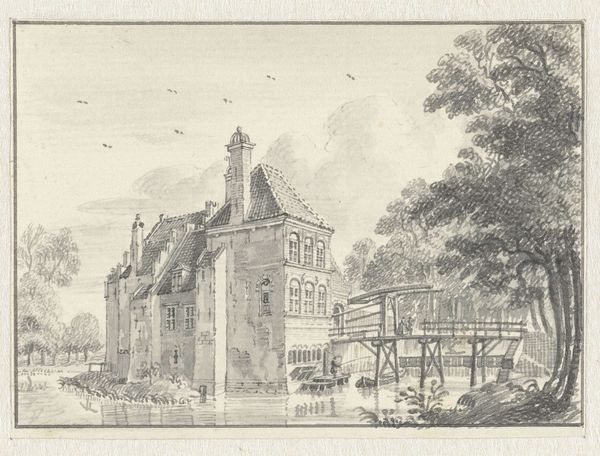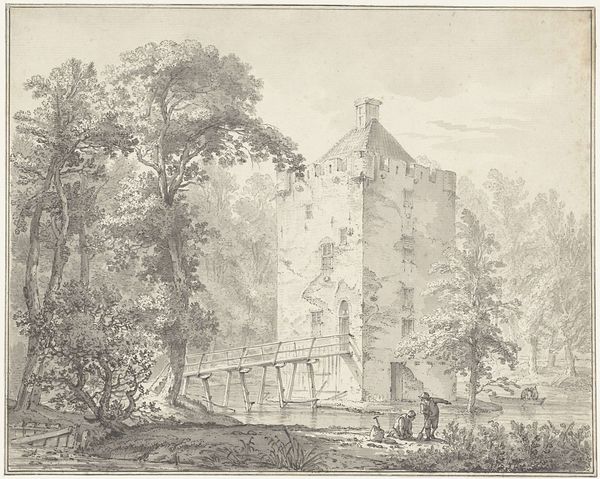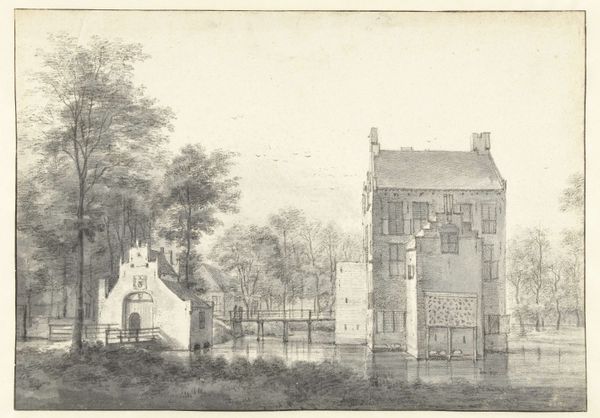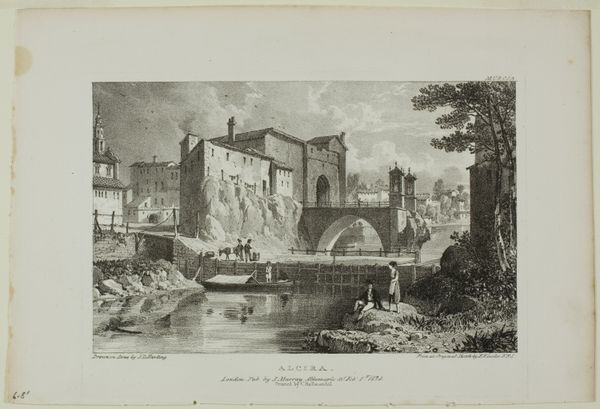
drawing, paper, ink, architecture
#
drawing
#
baroque
#
landscape
#
paper
#
ink
#
cityscape
#
architecture
Dimensions: height 162 mm, width 219 mm
Copyright: Rijks Museum: Open Domain
Jan de Beijer made this pen drawing of Huis Wijnestein near Jutphaas in 1763. The cultural importance of such images lies in the way they document the landscape of the Dutch Republic, especially the estates of the wealthy. In the 18th century, the Dutch Republic was dominated by a class of regents who derived their power from trade and finance. They invested their wealth in country estates such as this one. De Beijer’s drawing gives us a glimpse into the lives of this elite class. The drawing invites us to reflect on the economic and social structures that made such a lifestyle possible. Was this a self-consciously conservative image made to reinforce the social order? Or was it subtly critiquing the unequal distribution of wealth? To answer these questions, we can turn to archival sources such as estate inventories and tax records to understand the social conditions that shaped the production and reception of such images. Art is always contingent on social and institutional contexts.
Comments
No comments
Be the first to comment and join the conversation on the ultimate creative platform.
